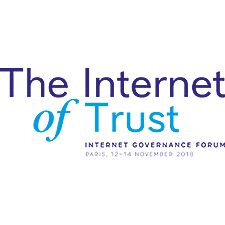Phase IV policy options for connecting and enabling the next billion(s) – phase IV call for public inputs
12 Nov 2018 09:00h - 10:30h
Event report
[Read more session reports and live updates from the 13th Internet Governance Forum]
This session, moderated by Mr Christopher Yoo, University of Pennsylvania Law School, featured a discussion on the IGF intersessional work, ‘Policy Options for Connecting and Enabling the Next Billion(s)’. The objective for this year is to collect concrete stories showcasing how connecting the next billion(s) helps achieve broader sustainable development goals (SDGs) such as:
-
SDG 7 – Ensure Access to Affordable, Reliable, Sustainable and Modern Energy for All
-
SDG 8 – Decent Work and Economic Growth
-
SDG 9 – Industry, Innovation and Infrastructure (particular linkage to the Internet access)
-
SDG 17 – Partnerships for the Goals
Ms Mary Uduma, Jaeno Digital Solutions, started her presentation saying that everybody agree the Internet is a disruptor. According to her, the SD8 is about how we can distribute the gains of information, automatisation, and the Internet development. Mary said that in her country some health workers refuse to adopt new technology because they are afraid to lose their jobs. She talked about the importance of retraining people, being one of the aspects of economic development, because normally people are afraid of embracing new things and want to keep their jobs. In the end of her participation, she affirmed the necessity of adopting policies regarding this issue in countries, organisations, and communities.
Mr Philip Zulueta, President and Founder, WiFi Interactive Network (WIN) Inc, talked about the business model of his company striving to provide affordable Internet access to the people that are underserved and unserved. According to him, they tested two different models. In the first one, the company provided the Internet access through the local stores. For example, if someone purchases a shampoo, the company would provide 30 minutes of free access. The second model was a paid model. His company set up its own base station and broadcast a Wi-Fi signal in a small town. The idea was if the company provided the Internet access to the stores, they would sell access at 20 U.S. cents per hour. In the end of his participation, he concluded that providing the Internet access to the base of the pyramid is not the question of affordability, it is the question of sustainability because people do not have the budget to pay for the Internet access and it is necessary to develop a business model to be able to give them free access with sponsors and advertisers paying for the taxes.
Ms June Parris, Halaqah Media, started talking about SDG 9, enforcing the necessity to make infrastructure sustainable with increase resource use efficiency. In her point of view, it is important to enhance scientific research, upgrade technological capabilities, and industrial sectors in all countries, especially in developing countries. She thinks that it is essential to reach out to villages and give them a voice, encourage bottom-up participation to prevent elitist solutions. One example of the challenges faced by her country occurred on Friday, when there was no Internet and it is a very difficult situation for the people that working with e-commerce.
Mr Carlos Rey-Moreno, Association for Progressive Communication, Community Access Networks Project, started his speech with some statistics about access to the Internet worldwide. According to him, the mobile infrastructure and the pervasiveness in remote areas is not going to grow. On the other hand, it was noted that there are new actors that are increasing the infrastructure in the areas in which traditional market players have not been able to provide connectivity, for example, community networks and small operators. Carlos talked about the case of Mexico that has set aside spectrum for social use. In his speech, Carlos mentioned that it is not only the community networks that are contributing to SDGs 9 and 8, but also optical fibers used by small and medium enterprises.
Ms Renata Aquino, E.I. Collective, talked about SDG 17. In her point of view, indigenous people could share their voice with global partners and gave an example of a group that published a manifesto to present to their community, through a program called Mozilla Open Leaders. She ended her participation by talking about the ICANN Global Indigenous Ambassador Program that brought two indigenous fellows to ICANN meetings.
Ms Joyce Dogniez, ITU Equals started her intervention remembering that achieving sustainable development agenda requires partnerships between governments, private sectors, civil society, academia, and technical community. She talked about the Equals project that brings together representatives from all these sectors to address the issue of the digital gender gap. According to her, the Equals project ensured coordination and collaboration happening at the local, regional and global levels for the projects on the gender gap issue.
Mr Michael Oghia, Global Forum for Media Development (GFMD), started his participation remembering the importance of discussing accessibility. For him, one of the biggest oversights is there is no actual direct or explicit link within the SDG framework between SDG 7 and 9, because over a billion people still lack access to reliable energy especially within the Global South. As data traffic rises, with the increase in the number of the Internet users, the Internet of Things, and machine to machine, energy consumption rises as well. Energy efficiency is rising along with the amount of devices connecting to the Internet. Michael thinks that these are relevant issues which are not getting sufficient consideration at the policy level.
By Nathalia Sautchuk Patricio
Related topics
Related event

